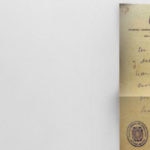A brief history of BBVA (XII): Banks enter the post-war period
On April 1, 1939, the last war report issued by Franco from Burgos concluded with a statement that read: “the war is over.” A Spain in harrowing shape needed to tackle its social and economic reconstruction process, both for its citizens, for its businesses, and, of course, for a banking industry that had seen its capabilities seriously damaged by the severity of the armed conflict. Spaniards were left facing a 40-year long dictatorship.

Banks’ results during the war
All Spanish banks were hit hard by the almost three-year long conflict. However not all institutions fared similarly, mainly due to the fact that, in many cases, they had to endure different levels of hardship.
Banco Popular, Banesto and Banco Hispano, nationwide institutions based in Madrid, saw their profits go down dramatically the war, as compared to the years preceding Franco’s uprising. However, despite a sharp decline in their figures from 1936 through 1939, neither of them posted any losses during those years. Furthermore, by the end of 1940, one year after the end of the conflict, the three aforementioned banks managed to post better results than in the last year of the Second Republic.
Banco Central, on the other hand, posted almost 2.5 million pesetas in losses during the three years of the war. However, by the end of 1940 it had already managed to pull out of the red. Other leading provincial banks, such as Santander and Guipuzcoano were able to make it through the war without posting losses.
The Spanish banking institutions that reported the best results after the war were Banco de Vizcaya and Banco de Bilbao. In the last year of the Republic, Banco de Vizcaya posted profits of 10,611,211 pesetas. From 1936 to 1939, it managed to increase this figure by 146%, reporting earnings totaling 26.123.456 pesetas. In 1940, the bank's profits stood at 16,147,500 pesetas, a figure that bears witness to the solid standing of the bank’s business. Banco de Bilbao was able to post even better numbers than its neighbor, boosting its profits by 233% during the war. Profits jumped from 10,248,067 pesetas in mid-1936 to 34,181,645 pesetas in the midst of the conflict. At the end of 1940, it disclosed profits of 16,357,339 pesetas, virtually identical to Banco de Vizcaya’s.

Ledger of accounting transactions of the Institute of Credit for the National Reconstruction, of 8 June 1939
The regional banks that operated on rebellious soil saw their earnings decrease significantly in 1939. However, most regional banks managed to avoid posting losses, and much like nationwide banks, they were able to post notable growth figures from 1940. Of all regional banks, the Aragonese, due to their location in the hazardous line that separated both factions during the war, were the ones that struggled the most, bearing sizeable losses during the war. Banco Zaragozano and the Banco de Crédito de Zaragoza posted the worst results.
On the other side of the conflict, banks operating on Republican soil – especially those in Catalonia - had a much harder time, posting extremely poor results. Although some of the Catalonian banks were ultimately able to pull through, writing off their losses against reserves, or even against other banks' profits, other entities disappeared as such, or were absorbed by their competitors. In the midst of the bleak scenario that Catalonia had to endure, Banco de Sabadell managed to cross the Rubicon of war without plunging into negative territory.
Emerging from the rubble
Once the civil conflict was over, Franco’s government continued operating along the lines it had followed during the wartime. Efforts were made to restore economic normality with a high level of interventionism from the State.
A series of urgent governmental orders were enacted for military authorities to implement, with special emphasis on the reactivation of the productive sectors. Already-existing bodies, such as the Institute for the Agrarian Reform, the National Welfare Institute, or newly created institutions, such as the Reconstruction Commission first, and the National Institute of Industry – in 1941 – played a key role in rebooting the national economy.

Former headquarters of the National Institute of Industry on Marqués de Salamanca Square, in Madrid
The new government wanted the National Institute of Industry (INI – Instituto Nacional de Industria) to become the main purveyor of credit for the national industry because, according to its assessments, private lenders were not going to be able to support the volume of investment required to build the new industrial fabric and, on the other, the low returns that these investments were going to yield would ultimately drive private lenders to focus on catering to particulars. Thus, the State became the biggest source of funding for the industry, and was therefore able to secure an even higher level of influence on these companies’ decision making processes.
The INI would become a bundle of public companies and strived to make up for the lack of imports that characterized Spain’s early post-ward period: an autarchic stage during which Spain would hardly engage commercially with other countries. However, the INI, unlike the free market, never paid too much attention to profitability when making its decisions, and instead focused on strengthening the Spanish economy, but always in line with the very particular interests of Franco’s regime.